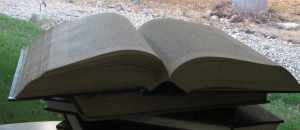I just finished my running records with my students. We use them to assess accuracy, fluency, and comprehension as students retell the story afterwards.

It’s my experience that the most difficult students to teach are those that score high in accuracy and significantly lower in comprehension. Since most students and most parents define reading as the ability to read words and not the ability to make meaning, we are often facing an uphill battle.
I try to encourage my students in their strengths, while being honest about their weaknesses. I have these students put a sticky note at the end of a paragraph that says, “Does that make sense?” If they can answer affirmatively they are to move the sticky note to the end of the paragraph, if they can’t they’re to use Dr. Goodreader to understand where comprehension is breaking down.
Any other suggestions out there???

